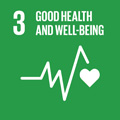- Docente: Valerio Cozzani
- Credits: 6
- SSD: ING-IND/27
- Language: English
- Moduli: Valerio Cozzani (Modulo 1) Ernesto Salzano (Modulo 2) Giordano Emrys Scarponi (Modulo 3)
- Teaching Mode: In-person learning (entirely or partially) (Modulo 1); In-person learning (entirely or partially) (Modulo 2); In-person learning (entirely or partially) (Modulo 3)
- Campus: Bologna
- Corso: Second cycle degree programme (LM) in Chemical and Process Engineering (cod. 8896)
-
from Feb 19, 2026 to Mar 20, 2026
-
from Apr 09, 2026 to May 08, 2026
-
from May 14, 2026 to Jun 05, 2026
Learning outcomes
The course aims at introducing the design of unit operations and equipment specific of the pharmaceutical industry. Criteria and procedures for process design, quality control and certification will be introduced.
Course contents
Requirements/Prior knowledge
A prior knowledge and understanding of local and integral balances of mass and energy, fluid dynamics models (perfect mixing and plug flow) is required to attend with profit this course.
In addition, students should master the utilization of spreadsheets.
Fluent spoken and written English is a necessary pre-requisite, because all lectures and tutorials, and all study material will be in English.
Program
Illustration of objectives and aims of the course.
Characteristics and peculiarities of the pharmaceutical industry. Outline of pharmaceutical legislation. The quality of the product.
Fundamentals of chemical kinetics for the synthesis of Active Pharmaceutical Ingredient (API)
The determination of the shelf-life of pharmaceutical products.
Viable methods for the kinetic analysis in the synthesis of API in batch and continuous reactors.
Sterilization of pharma products: decimal decay time, lethality time, batch and continuous reactor for the sterilization
Sterilization processes at variable temperatures
Vaporization and concentration processes
Drying processes
Batch distillation
Case studies presented by professionals
Readings/Bibliography
Chemical Engineering in the Pharmaceutical Industry: Active Pharmaceutical Ingredients, Second Edition, D.J. am Ende and M.T. am Ende (Eds.), 2019 John Wiley & Sons, Inc.
Teaching methods
Power point lecture presentations, demonstrations and practical classes.
Lectures by professionals.
Assessment methods
Achievements will be assessed by means of a written test which consists of the solution of two exercises (module 2) and open questions (2 to 5 questions) (module 3)
Higher grades (from 25/30 to 30/30) will be awarded to students who demonstrate an organic understanding of the subject, a high ability for critical application, a clear and concise presentation of their ideas, and an appropriate use of technical language.
A failing grade will be awarded if the student shows knowledge gaps in key concepts of the subject, inappropriate use of language, and/or logic failures in the analysis of the subject.
Teaching tools
Teaching material including PowerPoint slides, lecture notes are available to the students via the Virtuale Platform.
Material includes the analysis of case studies, examples and illustration of the solutions.
Office hours
See the website of Valerio Cozzani
See the website of Ernesto Salzano
See the website of Giordano Emrys Scarponi
SDGs


This teaching activity contributes to the achievement of the Sustainable Development Goals of the UN 2030 Agenda.
